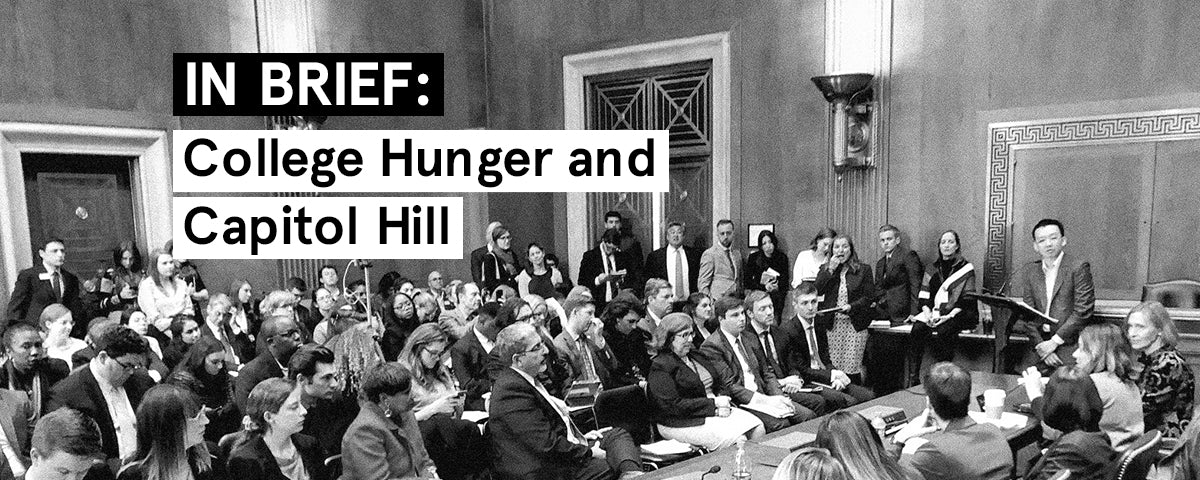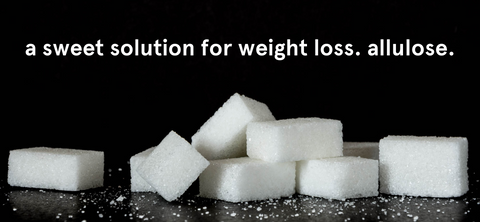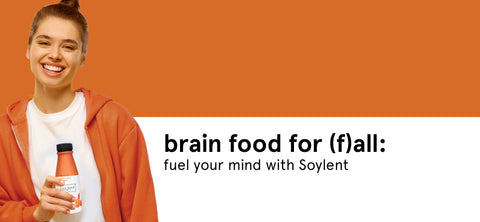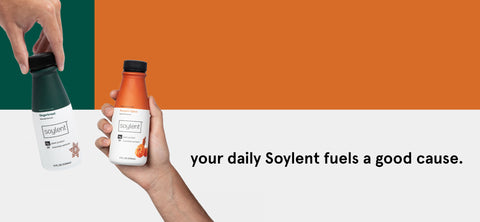
On January 9th, MAZON and The Hope Center hosted a briefing for the Government Accountability Office (GOA) for its first ever report on food insecurity on college campuses. Soylent sent our Head of Sustainability and Corporate Affairs, Jamie Sullivan, to Capitol Hill to participate.
Jamie reported back with some key takeaways and insights as to why we care so much about hunger and food insecurity on college campuses.

(with Rachel Sumekh, Founder & CEO, Swipe Out Hunger; Dr. Sara Goldrick-Rab, Founder, The Hope Center; Jamie Sullivan, Soylent; Samuel Chu, Synagogue Organizer, MAZON)
Hi there! I’m Jamie, Head of Sustainability and Corporate Affairs here at Soylent. That’s me, with the pink glasses. I’ll start with a little background about me so you have some context for this blog.
Until coming to Soylent I worked exclusively in the non-profit sector. I’ve spent my career working to improve educational systems and social safety nets — making sure that everyone has access to the housing and food they need to be healthy, happy members of society.
I’m a policy wonk and no stranger to Capitol Hill. I’ve often visited to talk about the positive impact of SNAP (Supplement Nutrition Assistance Program — formerly “food stamps”) with policy makers and leaders in the hunger relief sector. Being on the Hill is exciting and inspiring. Did you know that anyone can walk into a congressional building and and tell a representative what they think? Well, you can and you should.
I firmly believe that no one in our country should go hungry. As Americans, we have a civic duty to support those who need assistance. I know first-hand how important SNAP is and I’ve used SNAP twice, myself. I’ll spare you the details, but SNAP helped me buy healthy food when I was under-employed and supported me as I furthered my education.
Soylent brought me on to oversee their #SoylentForGood initiatives. I took the job because Soylent truly cares about these issues — they could have hired a public relations team to make them look good, but instead they hired me, a former SNAP recipient with a history of working in nonprofits and a Masters in Education.
Now that you know more about me, let me share my key takeaways from the “Hungry in College” briefing.

There are brilliant people working on this issue.
We all know do-gooders with the best intentions, those who want to change the world, but don’t know all the facts. Fortunately, this is not the case here. The panel was stacked with seasoned researchers, college administrators, students, and analysts.*
I’ll highlight one panelist here, a woman who has dedicated her life to this issue: Dr. Sara Goldrick-Rab, Professor of Higher Education Policy and Sociology at Temple University, and Founder of The Hope Center. Dr. Goldrick-Rab has been researching these issues for more than a decade and four of her studies were included or referenced in the report. One statement she made especially stood out to me. She said, “We have to invest in this problem or we are undermining the investment we have made in financial aid as a country.” The U.S. spends billions of dollars each year on federal financial aid, Pell Grants, Work-Study Programs, and more to support low-income students, but if those students go hungry and can’t learn while they are at college, they’re more likely to struggle and drop out, thus erasing that federal investment. We can do better. We have to do better!
In the fiscal year 2017, the federal government spent over $122 billion in grants, loans, and work-study funds through federal student aid programs to help make college accessible to students. This substantial federal investment in higher education is at risk if college students drop out because they cannot afford basic necessities like food. Source.
We think we know who college students are, but we’re wrong.

The report lays out that currently 71% of American college students are “non-traditional” meaning they aren’t relying on their parents, or right out of high school, or without dependents, etc. So we need to rethink our definition of college student. And when we think about how to support college students, we have to think about supporting diverse groups of learners with unique needs.
SNAP works (but only if you can access it).
As I mentioned above I’ve used SNAP twice. SNAP is a regulated payment on an electronic benefits card, which makes it highly trackable. Fun Fact: Because of its trackability and regulation, SNAP has the lowest fraud rate of any government administered program! The electronic benefits card allows users to purchase food directly from retailers, thus stimulating the economy and supporting food companies and, ultimately, the agriculture industry. That's why SNAP is authorized via the Farm Bill, it supports farms. It’s a program designed to be win-win.
How does it work? You become SNAP eligible when your income is at or below 130% of the federal poverty guideline. Knowing that, you might think that a lot of college students qualify. But here’s the deal — in 1980, the federal government barred many college students from using the program. The assumption was that “traditional” college students were gaming the system, taking advantage of a government program while also being supported by their parents at home. And maybe that was true for some people at that time, but it’s no longer the case. Now, 38 years later, these stipulations and restrictions are still in place and in order for a hungry, low-income college student to gain access to SNAP they must meet extra qualifications like having children, or working, etc. Often, even when students do manage to qualify for SNAP benefits, there are very few locations on campuses that accept SNAP. We created, and are exacerbating, this problem by not allowing students to access a program that was designed to help them.
SNAP eligibility is largely based on a household's income and certain other characteristics. However, in 1980 federal law restricted college students who are enrolled at least half time from receiving SNAP benefits. This law generally prevents traditional college students—who may appear to have a low income while attending college but receive support from their parents. Source.
We can fix this.
So many problems seem too big to fix, but after this meeting, I’m hopeful — not only because of what this report holds, but because of the people who want to fix it. There were academics, researchers, law-makers, foundations, entrepreneurs, the private sector (Soylent was the only private sector company in the room this time, so we’ll rep the private sector for the sake of argument), and most importantly students.
Here's what a couple students from select colleges had to say:
"I don't tell my family that I'm struggling with food because everyone I know is struggling with money—I don't want to stress them out. It's not a comfortable conversation to have. I haven't lived with my parents in years, I wouldn't even know how to ask them for help."**
"In the academic community, there's a normalization that you provide food at events to get students to come because they're hungry—one professor said 'starving is part of grad school.' One student responded to that by saying 'Isn't it odd that we're using students' hunger to get them in the door? Why should this even be an issue?'"**
College students have already conquered so many challenges in just applying, enrolling, attending classes, buying books, studying — it’s a lot. The one thing that stands in their way is access to food. Some of the great, possible solutions that were raised up at the briefing included equitable access to dining hall meal plans (shout out to Swipe Out Hunger), expanded access to SNAP through campus enrollment and federal policy change, increasing the number of retail locations on campus that accept SNAP, utilization of campus food pantries, meal plans included in financial aid packages, or programs that resembles the K–12 meal program. Ultimately, it can and will likely be a combination of all these things.
I’m so honored to work at Soylent because it’s a company that truly cares about college hunger and food insecurity, and not just on the surface. Last year, we participated in the #RealCollege summit, and plan to support again in 2019. Soylent not only directly donates to more than 20 college food pantries across the country, we’re also developing a plan in partnership with MAZON and Swipe Out Hunger to address college hunger at a national scale. It’s a robust plan that will include financial support, product donation, and support of state and federal policies that alleviate food insecurity for students.
Thank you MAZON and The Hope Center for co-sponsoring this briefing and thank you Senator Stabenow, Senator Murray, Senator Markey, and Senator Warren for requesting this report and making sure it was done so thoroughly!
If you’re interested in learning more, you can read the full report or watch the briefing online.
*Participants in the panel included: Dr. Sara Goldrick-Rab, Professor of Higher Education Policy & Sociology, Temple University; Founder, Hope Center for College, Community, and Justice. Samuel M. Chu, National Organizer for MAZON: A Jewish Response to Hunger. Honorable Teresa D. Miller, Secretary of Health and Human Services, Commonwealth of Pennsylvania. Dr. Pam Eddinger, President, Bunker Hill Community College. Carrie Welton, Policy Analyst, Center for Law and Social Policy. Yesenia Jimenez, Emerson National Hunger Fellow '18 (UC Davis '17, Pasadena City College '15).
**Source: GAO discussion groups with students at selected colleges taking steps to address food insecurity among students. | GAO-19-95
Photo Credits: Liza Lieberman, Policy Director, MAZON







